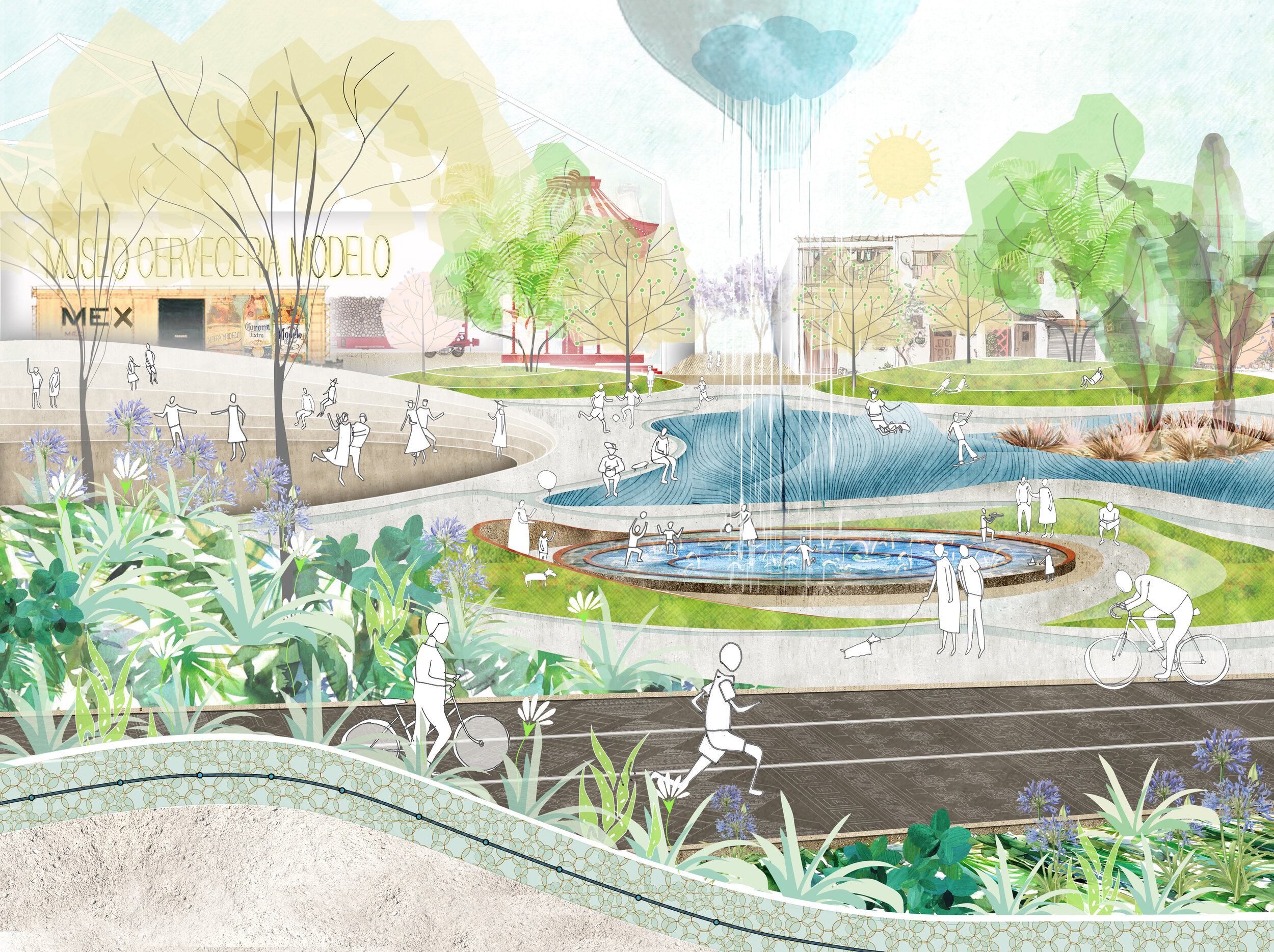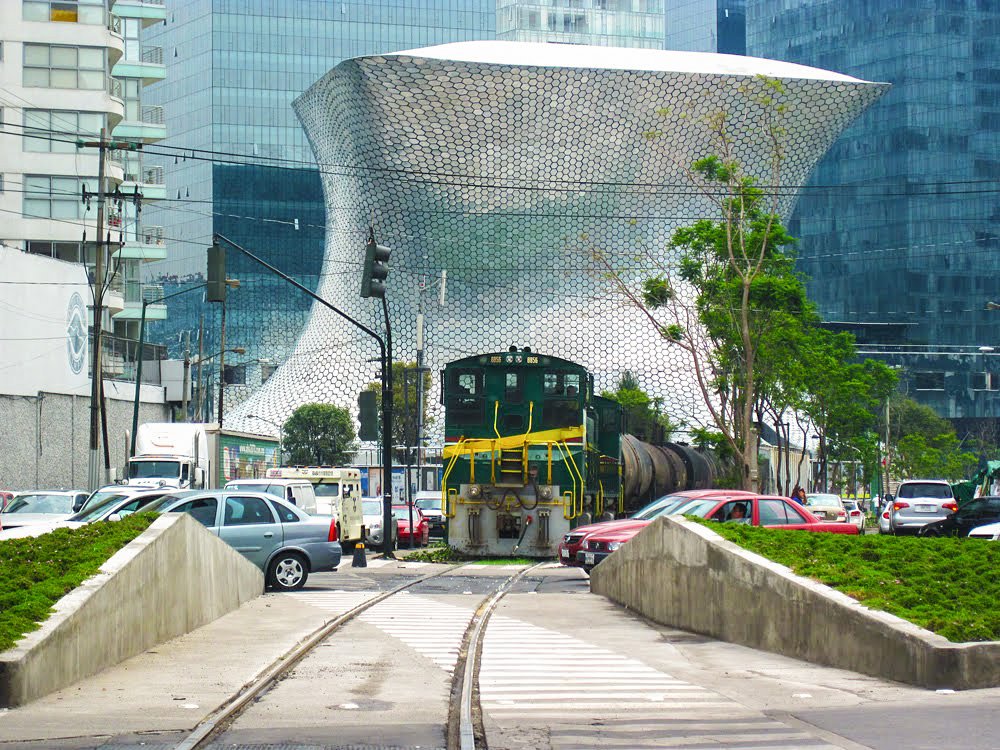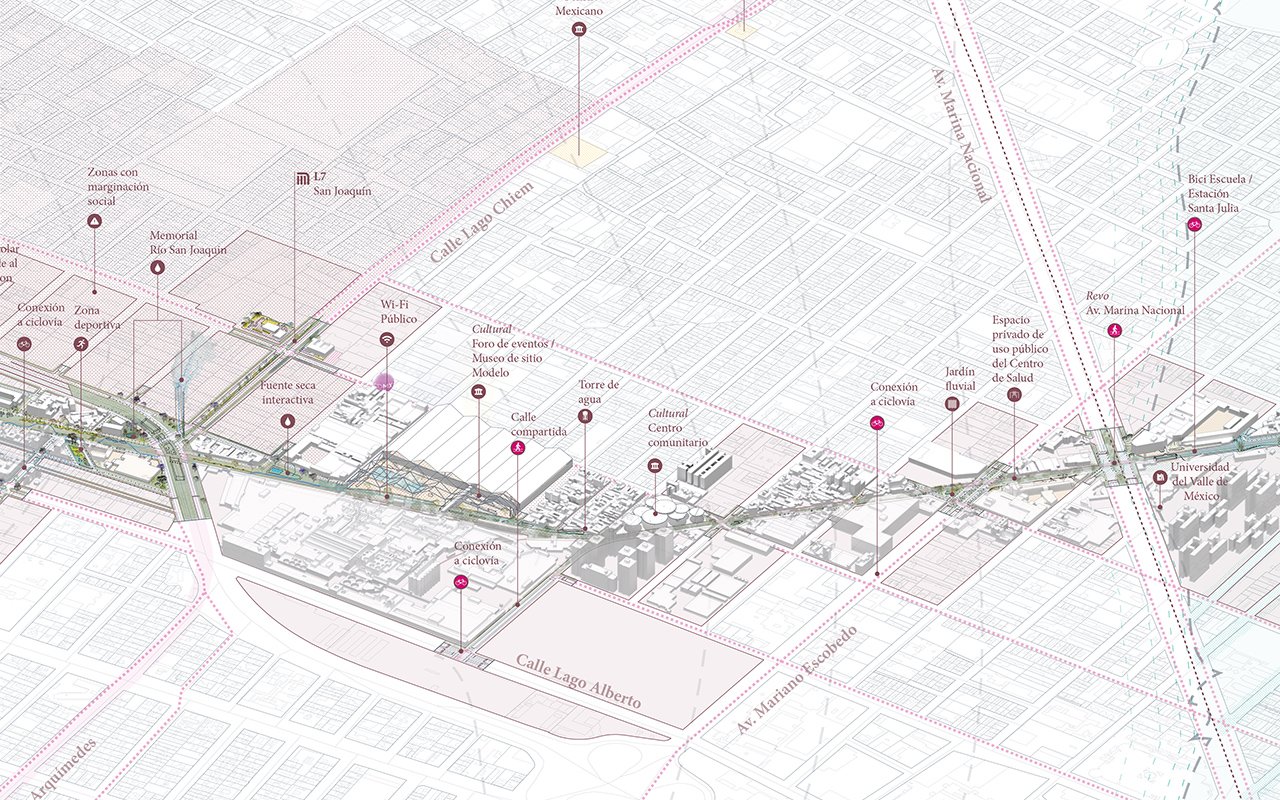
Parque Lineal del Ferrocarril Cuernavaca
City of Mexico
Location | City of Mexico, Hidalgo, México
Year | 2016
Client | Seduvi, Miguel Hidalgo borough, Colegio de arquitectos de la Ciudad de México
Collaboration | Agencia de Resiliencia Urbana (ARU), México
Status | International competition proposal
The open competition “Parque Lineal del Ferrocarril Cuernavaca” aims to recover the underutilized infrastructure of the Cuernavaca Railway and turn it into a dynamic public space. For this purpose, the borough of Miguel Hidalgo seeks to honour the site’s history, while responding to an imminent need for green and recreational spaces to expand opportunities for the local community.
A thorough analysis and documentation of multiple dimensions (technical, physical, historical, social and economic) shows the area for almost seven centuries has served and supported the urban centre of Mexico City. The heritage we find here today is a complex combination of infrastructure (railway line), historical legacy (Pensil Mexicano, Arbol de la Noche Triste), iconic industry (Modelo Brewery), educational centres (Biological school) and a flourishing cultural program (Jumex and Soumaya Museum). All these representative entities in turn, are surrounded by heterogeneous residential neighbourhoods.
In addition we learnt in our completed research project Towards a Water Sensitive Mexico City the importance of identifying the position of the project area into its geomorphological and hydrological context. There is an important contribution the project can make to the overall water balance of the urbanized valley of Mexico city. The project area is located in the transition between the hillside and the west basin, placing the last part of the stretch on top of the extinct Texcoco lake area.
Our team proposes a linear park where a water sensitive approach is combined not only with the rich history of the area, but also seeks to enhance its service and production vocation: an area that through most of the past millennium provided services, leisure, goods to the ever-growing population of the nearby city.
The park is divided in three areas: arroyos (creeks ), islas ( islands ) and estanques ( ponds) which work differently in terms of water management as well as organizing differently the space along the park. During the rainy season the park will stimulate the infiltration in the upper part, and will promote the storing and reusing rainwater in the lower part. During the dry season, the water management elements will serve as public space to the adjacent communities as water plazas, sport facilities, bike paths, walking paths, amphitheatres, and water towers as landmarks for the Hidalgo borough. Likewise, in a higher-level context, the project seeks to reinterpret the railway element as a line of strength and development of the metropolis.











